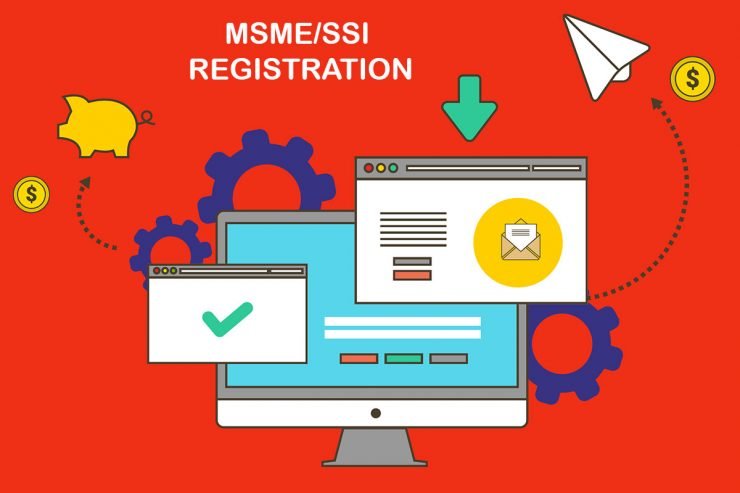

PRACTICE DETAILS
- Lawyer Mr. Shaman Jain
- Skills Government Registrations
- CATEGORY Direct Taxation, Tax Registrations & Filings
ABOUT THIS PRACTICE
The major areas of the indirect tax system in India is currently governed by Goods and Service tax. The compliances must be regularly fulfilled by the registered suppliers. All the essentials and time period for filing returns are mentioned under law based on the turnover and the activities.
GST return filing being an online process , enables the taxpayers to inform the Goods and Service Tax Network (GSTN) regarding the inflow and outflow of supplies comprising the amount of tax paid and collected. The taxpayer also needs to pay the amount of tax collected from an outward supplier of goods or services after the deduction of Input Tax Credit (ITC) during the process of recording the taxable transactions with the government
- Seamless flow of ITCC: The liability to pay taxes doesn't constitute the tax already paid by the supplier .The input tax credit can be passed to the buyer if the transaction of tax payment and collection is recorded through filing return by both the parties. If the return is not filed on time the registered person cannot claim the input credit .
- Simple and common form for all taxes: GST is a combination of three different types of taxes such as – IGST, CGST & SGST. There has to be a single form to collect the information about all three taxes paid or collected . Because of GST the online filing system has become easier and by bringing the concept of filing just one form for recording all transactions the process will get simplified further.
- Score higher compliance rating: Compliance structure can be monitored by the process of compliance rating which is introduced by GST network. All the people are given some ratings on this platform based on their regularity in meeting compliance and paying taxes and these ratings are available on the website. A consistent taxpayer is certainly given higher compliance ratings.
- Avoid penalty and interest: A delay in filing return, imposes a late fee of ₹ 50 on the taxpayer for each day of delay from the actual date of filing.Return must be filed well on time so as to avoid such heavy penalties. Even the taxpayers having no tax liability has to file the returns to avoid the late fee of ₹ 20 for each day of delay. Interest at the rate of 18% p.a. is payable on the outstanding tax liability.
- Digital Signature: DSC of Authorised Partner or Director, in case of LLP and Company only
- Certificate: GST Registration Certificate
- Log-in credentials: Log-in credentials of the registered person
- Details of Supplies: Details of the inward and outward taxable supplies along with the invoice details
GSTN has prescribed different types of forms for return filing return based on nature of transactions
- GSTR - 1: Details of outward supplies
- GSTR - 2: Details of inward supplies (Suspended temporarily)
- GSTR - 3: Finalised details of the supplies with payment of taxes
- GSTR - 4: Quarterly return by Composition Taxpayers
- GSTR - 5: Return by Non-Resident Foreign Taxpayer
- GTSR - 6: Monthly return by Input Tax Distributor (ISD)
- GSTR - 7: Monthly return by Tax deductor
- GSTR - 8: Monthly return by e-commerce operator
- GSTR - 9: GST Annual Return for normal taxpayers
- Firstly, the taxpayer is required to upload the final GSTR-1 return form (Details of outward supplies made by a taxpayer) either directly through data entry in the GST Common Portal or by uploading the file containing the GSTR-1 return form by the 10th day of succeeding month.
- GST Common Portal (GSTN) will be auto-generated in provisional GSTR-2 of a taxpayer.
- Purchasing taxpayer will have to either accept, reject or modify the provisional GSTR-2.
- Purchasing taxpayer shall be able to add additional purchase invoice details in his GSTR-2 which have not been uploaded by the supplier, to ensure the valid invoice issued by the supplier and receiving of supplies.
- Taxpayers will have the option to do reconciliation of inward supplies with suppliers during the next 7 days by following up with their counter-party taxpayers for any missing supply invoices in the GSTR-1 of the suppliers.
- Taxpayers will finalise their GSTR-1 and GSTR-2 return.
- Taxpayers will pay the amount shown in draft GSTR-3 (Monthly return) return generated automatically generated at the online Portal Post Finalisation of activities mentioned above.
- The taxpayer will debit the both ITC, cash ledger, and mention the debit entry number in the GSTR-3 return and would submit the same.
- GSTR-1 : Details of outward supplies of taxable goods or services affected Monthly 10th of the next month
- GSTR-2 : Details of inward supplies of taxable goods and/or services affected claiming input tax credit. Monthly 15th of the next month
- GSTR-3 : Monthly return on the basis of finalization of details of outward supplies and inward supplies along with the payment of the amount of tax. Monthly 20th of the next month
- GSTR-9 : Annual Return Annually 31st December of next financial year
- GSTR-3B : Provisional return for the months of July and August Monthly 25th of the next month
Process For Filing GST Return
- Information collection from the details shared by the taxpayer manually or from dedicated GST ready Accounting Software
- Documentation and reconciliation of the information filed
- Preparation of GST return
- Payment of tax by the taxpayer, if required
- Online GST return filing
- Acknowledgment of filing the GST Returns



